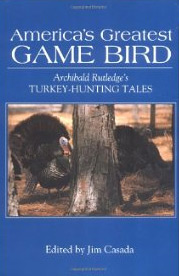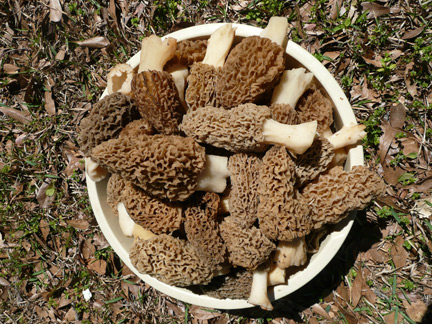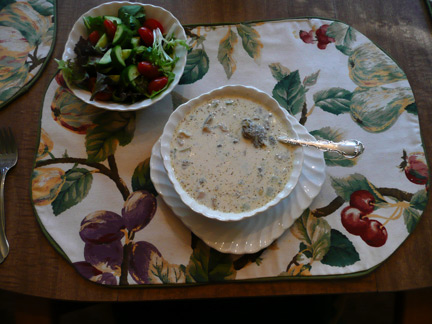March 2014 Newsletter
Click here to view this newsletter in a .pdf with a white background for easy printing.
March Madness—2014 For most Americans, the term “March Madness” is associated with basketball. Mind you, have nothing against the sport. In fact, I played basketball in high school and in my junior year was part of perhaps the finest team old Swain County High School ever put on the court. My greatest contribution was as a bench warmer, but I still savor those memories and would like to think that in some small way I figured in the team’s overall success. The team is enshrined in the high school’s athletic hall of fame, so there’s that to cling to if nothing else. Those warm memories from long ago aside, in my world of today March Madness translates to one thing—the every-growing sense of anticipation connected with the coming of turkey season. Just last weekend I spent a bit of time with two buddies looking over some land on which we have leased the turkey hunting rights, and during the course of our roaming we spotted a big group of birds, with eight longbeards following a group of hens. The hens had no interest whatsoever in the gobblers, but one of the latter was inclined to do some strutting every time he could stop without being left behind. Then he would comically break strut and hustle to catch up. Talk about a sight to get the adrenalin flowing! That’s right up my alley, and precisely one month from the day in which these words are being written I’ll greet dawn in high hopes of hearing gobbling and working a bird (or maybe several of them). Meanwhile, March will be a fine time for getting the garden plowed, provided the weather gives me a break with a sufficient period of time without rain to allow tilling and planting of early crops. In this part of the country there are all sorts of cool weather vegetables which should go into the soil before the month is out. Among them are potatoes, green peas, onions, lettuce, cabbage, broccoli, radish, greens (mustard, turnip, Swiss chard and kale) and the like. Just the thought of a mess of new potatoes and sugar snap peas is enough to set my salivary glands into action. Even if it’s too wet to plow, I’ve got outdoor chores aplenty demanding my attention—mulching my seedless blackberries, getting up all the trimmings from my muscadines and scuppernongs (I pruned them last month, as I always do in February), picking up downed limbs and trash from the yard, spreading some rotted wood chips in several places, transplanting a couple of trees and some muscadines I rooted, and more. Already the first daffodils are in bloom, bringing a bright and most welcome splash of yellow to the landscape, and you can see color on yellowbells. I cherish March, never mind that it is a temperamental and often tempestuous month. After all, it brings greening-up with all of its manifold promise of renewal and earth’s rebirth. Already maples in bloom are splashing the skyline with hues of red, dandelions and bluets have begun to bloom, and buds on a number of trees and bushes have swollen. We’ll have another spate (or maybe two or three) of rough weather, but that’s fine with me. Like Grandpa Joe used to say, “Once you’ve got February licked it may not be smoothing sailing but you know warming days and growing things are on the way.” In this part of the world the latter half of March brings glories without number in terms of blooming wildflowers. The forest understory takes advantage of every bit of spring warmth prior to trees leafing out fully, and as a result the observant eye sees beauty at every turn. The purple and white hues of violets; the yellow of buttercups, cinquefoil, Carolina jessamine, trout lilies, dandelions, and more; the hidden daintiness of jack-in-the-pulpits; the white of pipsissewa, service, and maybe early blooming wild strawberries and dewberries; and the deep purple of pawpaws (which seem to bloom too early about every other year, only to get nipped by a late frost). Most of all though, if the tail end of the month brings a warm rain followed by a few days of sun, my personal focus is on the morel mushrooms which pop up like magic.
Along with all its mixed vibes, March is a month of wondrous anticipation, and so it has been all my life. In youth and on into early manhood, that “can’t wait” for next month enthusiasm focused on the opening day of trout season, which always came on the first Saturday in of April. It was often blustery, seemingly always cold, and I remember one opener when it was blowing snow and another when there was ice along the creek edges. It didn’t matter. I was going to fish and that day marked, in my mind, the transition from winter to spring. That same sense of eagerness still holds me, but its focus has changed from trout to turkeys. Mind you, I still love the trill of a sparkling mountain stream and still rejoice in the sight of a head-and-shoulders rise to take a well-presented dry fly. However, a fellow can fly fish pretty much year round. Turkeys, on the other hand, can only be hunted for a few weeks. Since they laid hold of my soul several decades ago, the big birds consume my April days in what many would find a most distressing way. For me, it’s simply a matter of marvelous misery. In the turkey woods I’ve known misses and miscues, made mistakes and had mishaps, experienced missteps and mysticism, but there are always two constants. It’s an extended time of magic and one where the sole certainty is uncertainty. I wouldn’t swap it for anything. That should give you a pretty solid indication of where my thoughts are turning these days, and for the present I need to do a passel of “getting ready” in the form of checking equipment, getting fully caught up on all my writing assignments, working a bit on fitness (I’ve done too much reading and sedentary stuff and too little exercising, as a scouting session for turkeys a few days ago told me in joint-aching fashion), and, mostly, dreaming. In my mind’s eye I see gobblers coming to my calling like I was an irresistible oracle, telling shots leaving majestic birds lying before me at 30 paces, and spring woods bedecked in wildflowers in an all-encompassing blanket of beauty. The last part of the dream will become reality as sure as the return of greening-up spring. As for the first two, well, as Grandpa Joe always said, “A man’s got to dream and once in a while they might even come true.” RECIPES SAUTEED MORELS—AND MORE If you enjoy the luxury of having morel mushrooms you can find with some level of predictability in the early stages of spring, then you have the raw ingredients for one of the finest forms of nature’s bounty. My favorite way to fix morels is to sauté them in butter (the real McCoy, because I’ve got a reader who is also a dear friend who read me the riot act and gave me a major ration of grief when I dared suggest substituting margarine in a recipe a few months back). Clean the mushrooms carefully by soaking them in cold water, then rinsing and patting them dry with paper towels before splitting in half length-wise. From that point forward it is merely a matter of putting them in sizzling melted butter and cooking until they are just right. Another way to prepare morels is to clean and split them as is noted above, then drench in a bath of beaten eggs followed by a dip in Saltine cracker crumbs. Fry in butter (you can use olive oil but I prefer butter) to a golden brown turn.
2 cups morels, cleaned and sliced Clean and slice mushrooms; chop vegetables. Melt butter and add olive oil. Add onions and sauté until tender. Add mushrooms, potatoes, celery and carrots; cover and cook on medium heat for 15-20 minutes or until the vegetables are tender. In a small bowl, thoroughly combine flour with cold water and slowly stir into vegetables. Add chicken broth, salt and pepper until heated through. Add milk and Parmesan cheese and heat. Do not boil. Serve immediately topped with additional Parmesan cheese and paprika. Serves four. CLAM STUFFED MORELS
10 medium to large morel mushrooms, cleaned and sliced length-wise Clean mushrooms well and remove most of stem. Cut morels in half and chop the stems finely. Melt butter; add minced garlic and mushroom stems and sauté for 8-10 minutes until stems are tender. Drain clams and add to skillet with onions, parsley and salt and pepper. Sauté for 5 minutes. Stuff morel halves with clam mixture and place in a greased baking dish. Combine mayonnaise and mustard and top each stuffed morel half with a dollop. Bake for 10-15 minutes at 350 degrees. Serve immediately. VENISON HAMBURGER STEAK WITH ONION TOPPING If you have leftover ground venison, here’s a hearty recipe for a cold March day.
2 tablespoons canola oil Head canola oil in a large skillet and sauté onions until tender. Add water to avoid sticking (if necessary) while preparing onions. Stir paprika and black pepper into onions; remove onions from pan and keep warm. Season ground venison with salt and shape into 2 large 1-inch-thick patties. Pub hamburger steaks in onion-flavored oil and cook over medium heat until browned on both sides and desired doneness is reached. Arrange steaks on plates and top with reserved, cooked onions.
NOTE:
All the recipes above
are from Wild Bounty, Thank you for subscribing to the
Jim Casada Outdoors
newsletter. |
||||
|
Send mail to
webmaster@jimcasadaoutdoors.com with
questions or comments about this Web site. |




 Or there is morel mushroom soup or chowder, and for me it’s a good way
to use “extras” (if you are fortunate enough to have that big a crop)
many months later. Morels can be dehydrated and stored in a freezer for
reconstitution somewhere down the road, and soup is an ideal way to use
them either fresh or dried. Here’s a favorite chowder recipe:
Or there is morel mushroom soup or chowder, and for me it’s a good way
to use “extras” (if you are fortunate enough to have that big a crop)
many months later. Morels can be dehydrated and stored in a freezer for
reconstitution somewhere down the road, and soup is an ideal way to use
them either fresh or dried. Here’s a favorite chowder recipe: